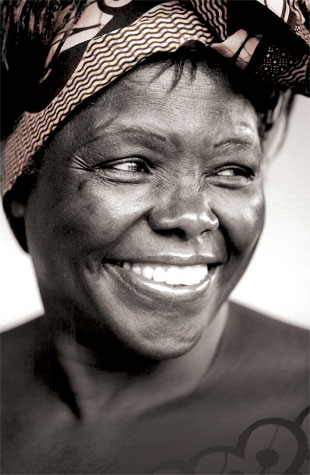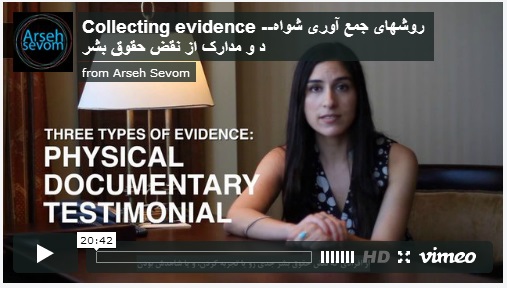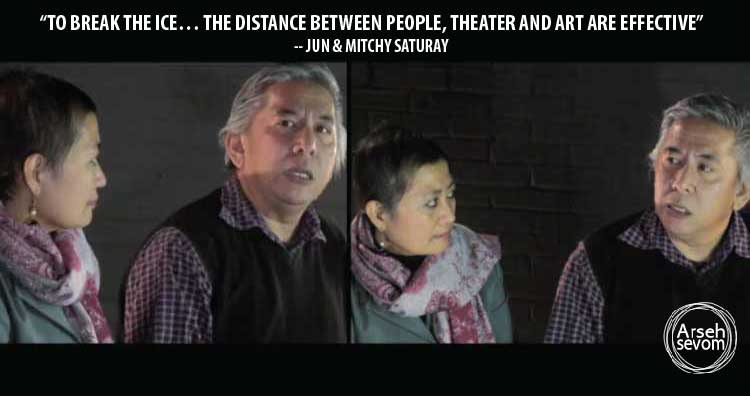
Remembering Wangari Maathai, I Will Be a Hummingbird
September 27, 2011
Help Us Learn More: Tell Us What You Think
October 5, 2011If you are visiting this website and ended up reading this piece, chances are that you already are a civil society activist or intend to become one. But whether you are a practicing or aspiring civil society activist, this text helps equip you with an insight into civil society activism.
So, if you are among the Nobel prize hopefuls with a PhD in sociology and another one in Political Sciences, then reading this text is obviously not recommended for you. Go prepare your prize acceptance speech! But if you are among the millions around the world – who are determined to be sources of democratic change in their societies and environments of residence – fetch a pen and paper.
What is Civil Society
Before trying to delve deep into a practical definition of a “civil society activist” let us see what is exactly meant by a “civil society”.
According to Jeffrey C. Alexander – one of the thinkers who has helped us understand this rather abstract idea – civil society was conceived in the 18th century in a positive way. It was in the words of the philosopher Immanuel Kant, “a burgher, city dweller’s society.” Later, more complex ideas were annexed to the endless definitions and as per a recent version, civil society is “a basic configuration in which society stands apart from the state, develops autonomously and becomes increasingly conscious of such autonomy at both the individual and the collective levels.” All that would translate into an active society wherein citizens take matters related to their community, neighborhood, rights and etc. into their own hands – “civilly”. These activities might include forming associations, clubs, organizations, developing networks and raising awareness on their issues of concern.
Civil Action Takes Patience
 In recent decades the concept of civil society has been revived in connection with democratization. In this way of thinking, civil society activism and democratization are strongly correlated. Recent case studies (especially in the Arab world) however, demonstrate that there is more to the establishment of democracies than civil society activism. The two main factors in addition to an active civil society are legislative and administrative elements. These elements in more closed environments, with strong patronage mechanisms, are usually restrictive obstacles thus limiting or, at best, slowing down the process of democratization. Therefore, here is your first lesson: do not expect your efforts, as important as they may be, to yield your desired results over night – learn to be patient.
In recent decades the concept of civil society has been revived in connection with democratization. In this way of thinking, civil society activism and democratization are strongly correlated. Recent case studies (especially in the Arab world) however, demonstrate that there is more to the establishment of democracies than civil society activism. The two main factors in addition to an active civil society are legislative and administrative elements. These elements in more closed environments, with strong patronage mechanisms, are usually restrictive obstacles thus limiting or, at best, slowing down the process of democratization. Therefore, here is your first lesson: do not expect your efforts, as important as they may be, to yield your desired results over night – learn to be patient.
With this brief introduction to “civil society”, we can now discuss who makes a civil society activist.
Here is our recipe for making one:
1. Do your homework: Activism does not mean much if you don’t have basic awareness of the various aspects/dimensions of your goals. Read your local news, try to familiarize yourself with the history of your cause, speak to people and listen to them, see if anyone has already done anything in this regard or not.
2. Find others: Once you are done with the first step, try to find people who have done similar things in the past. In an environmental example, if your goal is to collect garbage along the riverside, for example, try finding people with similar concerns on social media, in your neighborhood, or by means of searching for them elsewhere. Tip: sometimes finding one link connects you to a whole network. This might further motivate you to do your “homework” thoroughly in the initial step.
3. Expand: We tend to think that activism can start out and go on with only one person; however, it should be remembered that civil society activists must deliberate in what they do; they must take it upon themselves to expand their network whenever they can. The more successful you are in expanding your initial network the more “socially-civil” your activities will be.
4. Raise awareness: As a civil society activist, this should be your main objective. The methods for carrying out such a task vary from place to place and time to time but it is basically upon you to choose ways that are agreed by the public as “civil behavior” that, according to the scholar on Neil L. Whitehead, do not diminish anyone’s power of choice or violate their freedom.
5. Take collective action: Civil society is about volunteerism and participation (against coercion and exclusion). As a civil society activist you are obliged to address all those who believe in the basics of civil society and include them in your activities.
6. Spread the word: Good activists find a way of making their word heard to their peers and then to outlets that are specialized in spreading messages. The good news is that despite all the concerns, this one has never been as easy as it is now. Recent cases such as the “Arab Spring” and the Iranian “Green Movement” were great examples of how words and pictures taken in the streets of Cairo, Damascus, and Tehran were dispersed in almost real-time through “normal” citizens.
7. Remain independent: In an ideal world, a civil society activist is independent and their associations are independent of sources of power and patronage.
8. Secure funds: Human labor costs, full stop. This is perhaps the most basic, yet controversial, point in our list as there is a good amount of debate as to the mechanisms and effects of funding or supporting activists. Remember whoever or whatever is to be your source of funds, they should meet two conditions: 1) They must, obviously, conform with civility as discussed earlier. 2) Financing activists should never entail any commitment on them or their agenda. Independence must never be compromised.
Written by: Hooman Askary for Arseh Sevom
Arseh Sevom is committed to a vibrant civil society. We welcome participation and suggestions. Please contact us with your ideas here.




